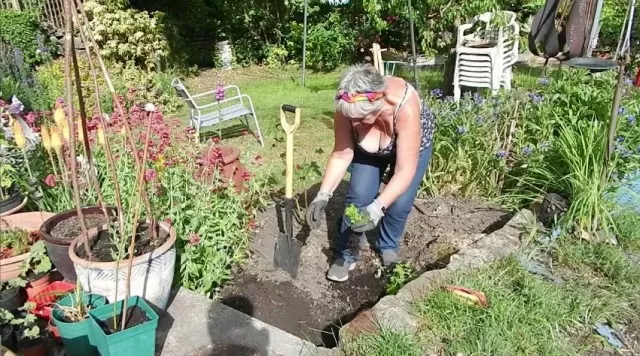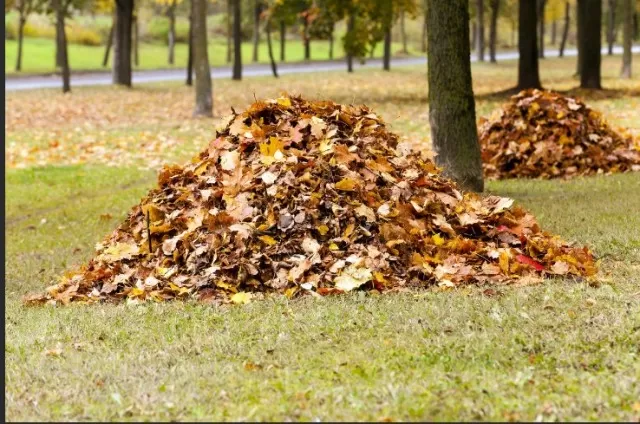Common Autumn Gardening Errors.As the air turns crisp and summer transitions into fall, it’s time to prepare your yard for the winter slumber. While it’s tempting to stick to familiar routines passed down through generations, it’s worth considering that some traditional fall yard clean-up practices might benefit from a fresh approach. To help you make the most of your fall gardening efforts, we’ve consulted experts to identify the most common mistakes and suggest alternative approaches.By avoiding these common fall gardening mistakes and implementing these expert-recommended alternatives, you can enhance your garden’s resilience and prepare it for a thriving spring season.
Embrace the Beauty of the Winter Garden: Why Not to Clear-Cut the Perennial Bed

As winter approaches, the temptation to tidy up the garden by removing dead perennial flowers and plant material is strong.
However, Aaron Steil, a horticulturalist with Iowa State University Extension, points out several compelling reasons to resist this urge and leave the garden as it is.
First and foremost, the remnants of stems, leaves, and grasses from the previous growing season serve as a protective layer that helps the underlying plants endure the harsh winter conditions.
These materials trap leaves that have fallen from nearby trees, further enhancing their insulating properties and creating a cozy winter blanket for the garden.
Furthermore, the undisturbed perennial plant material provides crucial winter cover for beneficial insects.
Native bees, in particular, rely on hollow reeds found in grasses and perennials to create nesting sites. Preserving these spaces can help support these essential pollinators and other overwintering insects.
But the benefits don’t end there.
Perennial seed heads left intact can serve as a valuable food source for birds, whether they are wintering in your area or preparing for their migration south. By allowing the garden to retain its natural and somewhat untamed appearance, you not only enhance the garden’s resilience but also contribute to the biodiversity of the ecosystem.
In conclusion, there are numerous compelling reasons to leave your perennial bed undisturbed during the winter.
Embrace the unique beauty of a garden in its natural state, and in doing so, you’ll create a nurturing and biodiverse environment that supports both plant and animal life throughout the colder months.
Winter Care for Vegetable Gardens: The Importance of Cleaning Up
While it may be tempting to leave plant debris in the Vegetable Garden during the winter, there are compelling reasons to adopt a different approach.
Unlike perennial gardens, vegetable gardens are more susceptible to insect pests and diseases, both of which can survive the winter in the remnants of plant debris.
Aaron Steil, a horticulturalist with Iowa State University Extension, emphasizes the benefits of a thorough cleanup in vegetable gardens.
Removing plant debris helps eliminate hiding spots for pests and diseases during the winter. By tidying up the garden, you reduce the risk of these harmful elements taking refuge in the remnants and potentially impacting your plants in the coming year.
An additional measure to protect your garden is crop rotation.
Moving crops to new locations in the garden in the spring disrupts the life cycle of pests and diseases. It prevents them from becoming established in the same spot, reducing the likelihood of future infestations.
In conclusion, while there are valid reasons to leave some garden areas undisturbed during the winter, vegetable gardens benefit from a different approach.
Cleaning up plant debris and practicing crop rotation are essential steps in maintaining a healthy and productive vegetable garden, ensuring a bountiful harvest and reducing the risk of pests and diseases in the following growing season.
Pruning in Fall: Timing Matters for Healthy Plants and Trees

While it might be tempting to give your plants and trees a trim after a thriving summer, it’s crucial to exercise caution when it comes to fall pruning.
Fall happens to be one of the least favorable times to reach for the pruning shears.
Many woody plants like lilacs, forsythias, viburnums, hydrangeas, and more have already set buds for the following year by the fall season.
This means that any pruning carried out now risks removing the buds that would have blossomed into next spring’s vibrant flowers or fruits. It’s an action that could unintentionally diminish the beauty and productivity of your plants.
Additionally, certain plants, including fruit trees and roses, respond to pruning by rapidly pushing out new growth.
While this fresh growth can seem appealing, it leaves the plants vulnerable to cold injury, especially when the first snowpack or frost arrives.
For larger trees, specific seasons are preferable for pruning, as different trees have distinct requirements.
To ensure your pruning efforts are beneficial rather than harmful, it’s advisable to conduct some research on the pruning needs of your trees. Better yet, consider seeking the expertise of a certified arborist who can provide guidance tailored to your specific tree species and local climate conditions.
In conclusion, when it comes to pruning in the fall, timing is critical.
Avoiding fall pruning for most plants and trees is a prudent approach, as it helps maintain the health and vitality of your garden and ensures that you don’t unintentionally disrupt the natural processes that lead to beautiful blooms and fruitful harvests in the following year.
Protecting Trees from Wildlife: A Winter Challenge
As fall progresses into late winter, young trees face a potential threat from wildlife, particularly bucks.
Bucks engage in antler rubbing behavior during this season for various reasons, including shedding the velvet that has been growing on their antlers all summer, marking territory during the breeding season, and ultimately shedding their antlers. However, this rubbing can cause significant damage to young trees, potentially girdling them by removing the bark layers that transport food from roots to leaves.
Aaron Steil offers valuable insights into protecting your trees from this wildlife-induced damage.
To safeguard young trees from deer rubbing their antlers, he recommends pounding three or four posts into the ground around the tree, spaced no more than 18 inches apart. This barrier prevents the deer from getting close enough to the tree for a good rub, preserving the tree’s integrity.
Additionally, trees can face another threat during the winter – hungry rabbits that nibble away at the bark.
To prevent this, you can add chicken wire or wrap the tree trunk with plastic tubing. The key is to ensure that the protective barrier is tall enough to deter the rabbits, especially when snow is on the ground.
Protecting your young trees from wildlife during the winter is essential for their growth and long-term health.
By implementing these measures, you can help your trees withstand the challenges posed by nature’s creatures and ensure their continued development and vitality.
The Art of Leaf Management: Leaving Full-Size Leaves on the Lawn

As autumn arrives, the abundance of fallen leaves in your yard offers a wealth of opportunities for enhancing your garden’s health and biodiversity.
However, it’s crucial to understand that while leaves can be a valuable asset in certain areas of your landscape, your turfgrass might not be the best place to leave them.
Around garden beds and at the base of trees, fallen leaves serve as a natural resource, enriching the soil, retaining moisture, and insulating the roots.
Additionally, they provide shelter for overwintering bumblebees and eggs and larvae from beneficial insects such as fireflies, pest-eating beetles, butterflies, and Luna moths. This not only preserves these valuable members of your ecosystem for the following year but also provides a source of food for birds.
However, when it comes to your lawn, leaving full-size leaves can have adverse effects.
Aaron Steil advises against it, explaining that if you leave a layer of leaves on the lawn over the winter, you risk smothering the grass. This can lead to bare spots, which are all too inviting for weeds like crabgrass, foxtail, purslane, and spurge to take root and thrive.
Even if you’re aiming to support pollinators by introducing flowering plants like clover to your lawn, weeds like foxtail and purslane lack beneficial flowers for pollinators.
The solution is to rake the leaves and transfer them to garden beds or a compost pile.
If the leaf layer isn’t particularly thick, you can also mow over it once or twice. You’ll know the pieces are sufficiently small when you can see the grass underneath.
These mulched leaves will gradually break down and contribute valuable organic matter to the soil, promoting its overall health.
In conclusion, the approach to dealing with fallen leaves should be strategic, taking into account the specific needs of different areas of your landscape.
While they can be a boon to garden beds and the base of trees, it’s best to remove them from your lawn to maintain a lush, weed-free, and pollinator-friendly turf.
*The information is for reference only.